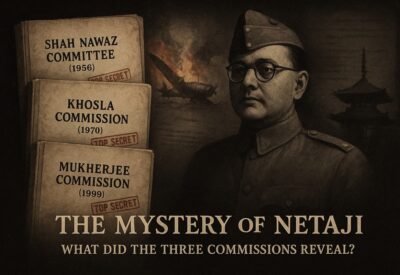Imagine it’s a humid August evening in 1945. The roar of propellers fades, and a Japanese army plane shudders into the night sky from Taihoku Airfield (today’s Taipei). On board is Subhas Chandra Bose—Netaji—still burning with the dream of free Read more…
The Indian freedom struggle witnessed several waves of resistance, but few had as electrifying an impact as the rise of Subhas Chandra Bose and the Indian National Army (INA). Though Bose’s audacious campaign and the cascading effects of the INA Read more…
The Aryan Invasion Theory (AIT) has long been debated in Indian history. It proposes that nomadic Indo-Aryans from Central Asia entered the Indian subcontinent around 1500 BCE, introducing their language, culture, and technology. European scholars, particularly Max Müller in the Read more…
Subhas Chandra Bose’s resignation from the Congress presidency in 1939 was a turning point in India’s freedom struggle. It highlighted the deep ideological rift between Bose’s radical vision and Mahatma Gandhi’s moderate, non-violent approach. The conflict between Bose and Gandhi Read more…
The 20th century was a time of significant change in South Asia. This timeline explains the key events that led to the creation of Pakistan in 1947 and the birth of Bangladesh in 1971. Each section breaks down essential moments Read more…
The concept of self-defense has been deeply ingrained in Hindu culture for centuries. From ancient warriors like Arjun to modern-day martial arts practitioners, Hindus have always valued the ability to protect themselves and their communities. However, in recent decades, there Read more…





